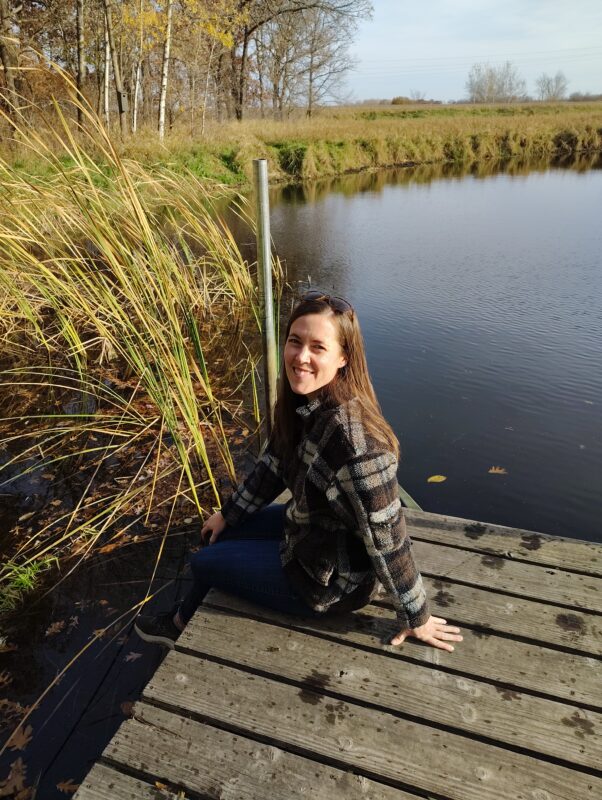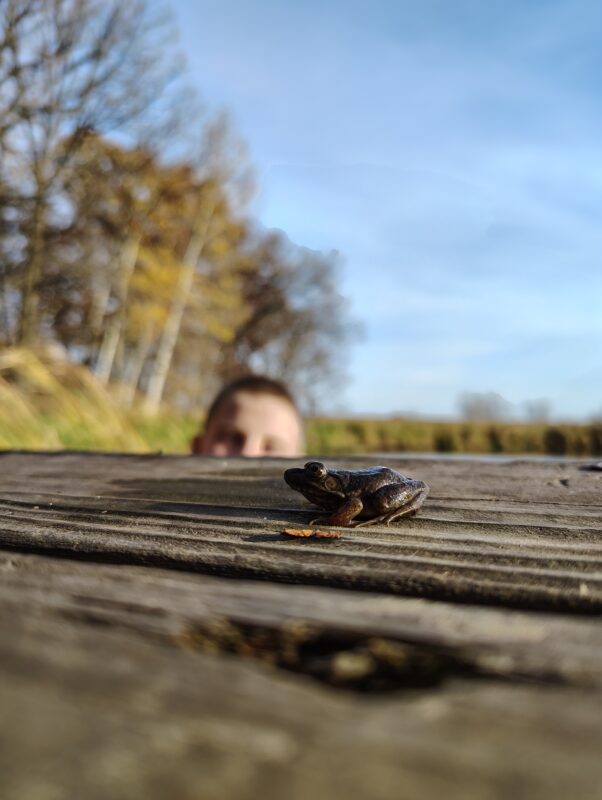
Written by Allison Jurek, Upstream Care for Place Fellow
Connect with place, know place, care for place. A simple three-stepped mantra that can serve to inspire. In my previous story, I offered the practice of forest bathing as a way of living this mantra. I’ll be the first to agree that the term ‘forest bathing’ is one that can feel abstract. I struggled with this myself when first introduced to the practice. The more I learned about the practice and experienced it myself, the more I realized the core elements are those of which I had always reached for. Forest bathing is an uncomplicated and stripped-down approach to experiencing and connecting to nature. It requires no special equipment, you don’t have to travel to remote wilderness, and there isn’t a goal other than to just ‘be’.
In a world full of grandiose ideas about how we should experience nature and the ever-present FOMO, forest bathing is an antidote to all things complicated.
Let’s dive into this a little deeper. Forest bathing, in its simplest form, is nothing more than you and nature. As a certified guide of forest bathing, I am, of course, a proponent of a guided experience. As a nature lover and human being, I am a firm believer that you can forest bathe nearly anywhere and anytime, guide or no guide. Twenty minutes is ideal, but not necessary, for a simple nature connection. Start from a place you feel safe and comfortable. To begin, this might just be looking out a window or sitting with a houseplant; nature is nature. Consider silencing or leaving your phone in another room, this is about you and nature. Begin by noticing five things you can see. Look for small details, colors, patterns, light, and shadows. Move on to four things you can touch or feel. If you are looking out a window, notice what you are feeling as you sit such as the temperature of your skin, the sensation of the sun’s warmth or a breeze. You can even use your mind’s eye and imagine what you might feel. What are three things you can hear? Connecting to a place is not only acknowledging the natural beings (the more-than-human world as say in forest bathing) but the human presence and human sounds, too. After all, we are nature. Next, notice two things you can smell. Maybe you want to collect a small nature object such as a stone or a leaf. Is there a scent that lingers on your skin after holding it? Lastly, what is one thing you can taste? Maybe this is just a lingering taste in your mouth from what you’ve last eaten. If you have a nature being you are certain is safe, you might allow yourself a taste. Parting your lips and breathing through the mouth is another way you might experience subtle tastes in the air. You can simplify this even further by removing the prompt to notice a certain number of sensory experiences and just simply go through the senses.

In forest bathing, this practice is referred to as ‘sit-spot’ and it is often incorporated into a longer two to three hour forest bathing experience. Sitting in nature or with nature uninterrupted and without distraction allows for the connection to place and beings to take shape. We allow our bodies and our minds to notice and feel things that we otherwise don’t grant ourselves the time to experience. In a natural landscape, sitting quietly and in stillness for twenty minutes is often just the right amount of time for the beings to re-enter and resume their natural activity and allow our mind to quiet, further enhancing the experience.
I find the times I feel most grounded in nature to be those in which I truly embrace the ethos of forest bathing. Getting outside with no specific goal other than just to be present with nature. Moments when I make a spontaneous detour upon seeing a ‘township park’ sign with only an arrow to direct me. Allowing myself a short break from chauffeuring children and errand running to stop and explore. Times when I randomly jump in the car, my only hope being to enjoy a peaceful trail. In these moments I feel fully myself, there is no pretense, no preparation, no expectation. Allowing myself to have moments of simple stillness in nature. It’s sort of an intentional choice to be unintentional, to allow myself a form of spontaneity with connecting to nature. We will each connect with a place in a way that is meaningful to us. Allow yourself the opportunity to explore nature in different ways and you will discover your own way of connecting. The beauty of forest bathing is the gift of being present, time to reflect and remember how we are a part of nature.
As we adopt the practice of caring for place through nature connection with experiences such as forest bathing, we also are caring for ourselves. After all, we need our minds and bodies healthy and vibrant to bring to fruition our efforts of conservation and land stewardship. The Centers for Disease Control (CDC) reports that we spend approximately 90% of our time indoors. Call it a challenge, an invitation, or a resolution, whatever you’d like, just get out there – replace the scrolling with strolling. The CDC also reports that time in nature can improve your heart health through improved circulation and lowered cholesterol and blood pressure. In addition, improved mental health, increased vitamin D levels, more restful sleep and immune-boosting benefits are also touted as a few of the health perks of spending time in nature. Nature’s cyclic presence is ever providing us with inspiration for how to persevere. We need only to allow ourselves to be still, to listen and to feel the heart of nature. It is this simple approach that allows us to connect to a place. And it is this connection that then empowers us to care deeply for, and tend to the needs of the land.
What’s Your Upstream Story?
We share stories of stewardship written by and about Minnesotans like you! Share your story here.